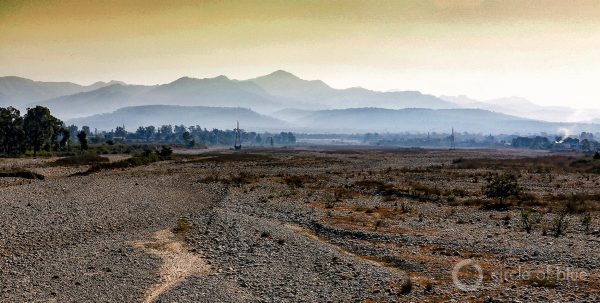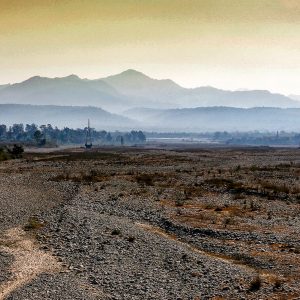The Stream, June 3: Drought and Doubt Rise While Water Levels Fall
The Global Rundown

The latest national drought assessment shows that 19 of the 36 states and territories are experiencing moisture deficits of at least 50 percent when compared to normal years of rainfall. A dry riverbed in Uttarakhand, a Himalayan state. Photo © Dhruv Malhotra
Water levels in India’s 91 reservoirs are at the lowest points in a decade and water levels are also falling in aquifers– which supply 85 percent of the country’s drinking water. More than two decades of U.S. Geological Survey data show what contaminants are increasing in the United States groundwater, and which are becoming less of a threat. China is having to get creative in its efforts to solve a growing sludge scourge. Meanwhile, water-monitoring is getting an IoT upgrade. And at least one eminent environmentalist is concerned that the H2O ostridges are coming home to roost.
“You hear people voicing a lot of confidence in the groundwater they can’t see, even if their lake water is dropping. They don’t understand that the two are connected.” –Cynthia Barnett, environmental journalist and author of Rain: A Natural and Cultural History, on the immediate dangers of drought denial. (IDEAS.TED)
By The Numbers
$165 billion USD– Cost of a diversion plan proposed by the Modi government to shift water supplies in 37 Indian river basins to serve drought-prone regions in the country. Circle of Blue
35 million– Tons of sludge recently estimated to have been produced by Chinese wastewater treatment plants in 2015, a 16 percent increase from the previous year. New Security Beat
20 meters– The “dark zone” depth beneath which the water table of the affluent community of Gurugram, India, has plummeted. No further extraction is allowed past this point. Daily Mail India
Science, Studies, And Reports
The U.S. Geological Survey’s recently published National Water Quality Assessment indicates chloride and nitrate concentrations are rising in the nation’s groundwater while arsenic levels are holding steady or falling. The federal science agency also generated an interactive online map to display their data, which goes back more than two decades. Circle of Blue
On The Radar
A new Internet of Things-based water-monitoring platform is now connecting water to the world wide web. Verizon’s Grid Wide: Intelligent Water, provides governments, utilities and other organizations with cost-effective tools to conserve water, modernize delivery systems and manage infrastructure upgrades. GCN
Circle of Blue contributor
Nick is interested in the social and political instability caused by growing global resource scarcity. He is also the director of communication at On the Ground, an international aid and development NGO that supports sustainable community development in farming regions.




